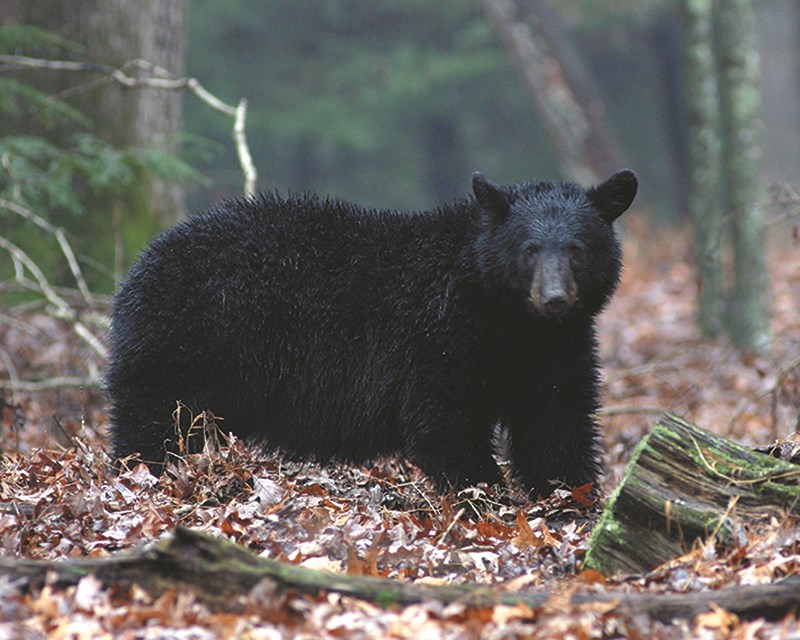Pam Wright
A black bear has been rambling about in Sarnia-Lambton and its travels have become the talk of the town.
Over the past few weeks multiple sightings have occurred in the Darcy McKeough floodway, near Sombra.
Local farmers, who did not wish to be identified, said they observed the bear calmly walking along fence lines, and bear scat has been discovered in fields.
The bear was also spotted west of Highway 40 in the floodway on June 25 but that wasn’t reported until 10 days later, said Rick Battson, director of communications for the St. Clair Region Conservation Authority.
Black bears were extirpated from the region in the later 1800s after settlers razed the forests for farmland.
“It’s rare, and people are talking about it,” said Battson, who noted the animal had managed to steer clear of trouble.
“Let it do its thing,” he advised.
A black bear was first sighted near Lake Huron in Lambton Shores in early June, and after that a bear was seen numerous times in central Lambton.
Though officials believe it’s the same bear, that hasn’t been confirmed.
Nor is it known if a bear that was struck and killed by an SUV in Poplar Hill west of London on July 8 was the Lambton animal.
The Ministry of Natural Resources has recorded nine bear sightings in the region, and noted that one bear could have prompted all the calls.
The Lambton bear is probably a juvenile male, which have been know to roam hundreds of kilometres in search of new territory, said Emma Horrigan, the citizen science coordinator with Ontario Nature.
Some experts say growing development in central and northern Ontario is pushing bears south, while others believe improved conservation efforts such as tree planting and the creation of wildlife corridors has made southern Ontario more hospitable.
But Horrigan said no studies have been conducted into why black bears appear to be heading south.
Nor is there any evidence of a breeding population anywhere in the region, she said.
Lambton’s travelling bear likely came south along the Lake Huron shoreline. Bears are shy animals, and avoid humans unless they discover a delicacy like garbage, which is when trouble begins, Horrigan said.
A bear will return again and again to a food source created by careless humans, creating what is known as a “nuisance bear.”
But it doesn’t have to come to that, she added.
“When precautions are taken, bears and humans can co-exist quite happily.”
But when conflicts do arise it’s usually not a happy ending for the bear. Last year in Newmarket police shot a bear in a residential area, which upset many who believed it should have been trapped and relocated.
The last previous bear sightings in Lambton were eight years ago, and in 2010 an errant bear was shot and killed in the City of London.
Non-emergency encounters (seeing a bear is not an emergency) can be reported to the ministry at 1-866-514-2327, from April 1 to Nov. 30.
In an emergency, call police or 911.
Fact Box:
* When not hibernating, bears spend most of their time looking for food.
* Though black bears will eat carrion, insects, fish, deer fawns and moose calves, the bulk of their diet is plant material.
* To prevent conflicts, make sure garbage cans have tight-fitting lids and garbage is only put out the morning it is picked up.
* Wash garbage containers with a strong disinfectant
* Fill bird feeders only in winter months
* Don’t put meat, fish or fruit in composters
* Pick up all fallen fruit from ground
* Remove grease and residue from barbecues
Source: Ministry of Natural Resources
